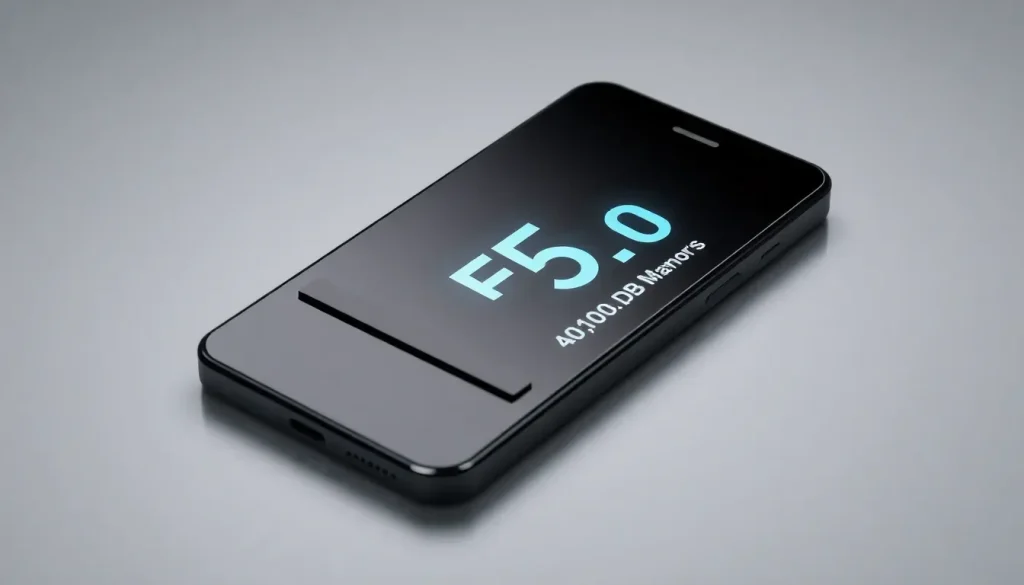UFS 5.0 storage memory for smartphones reaches 10,800 MB/s

As technology rapidly evolves, the demand for faster and more efficient data storage solutions becomes increasingly critical. The latest in this evolution is the announcement of the new UFS 5.0 standard, which promises to revolutionize the world of flash memory in portable devices. Understanding its capabilities could change how we think about mobile technology and storage solutions.
JEDEC, the organization responsible for standardizing these technologies, has laid the groundwork for this significant leap in storage performance. While the full development of UFS 5.0 is still underway, initial specifications reveal exciting advancements that can impact various devices, from smartphones to wearables and even gaming consoles.
What we know so far about UFS 5.0 storage
According to the latest communications from JEDEC, UFS 5.0 is set to deliver unprecedented performance levels. Utilizing the MIPI M-PHY v6.0 physical layer, this new standard marks a considerable upgrade over its predecessor, UFS 4.0, which relied on MIPI M-PHY v5.0. This upgrade effectively doubles the maximum data rate, resulting in significant changes to how data is transferred and processed in devices.
Here are some key aspects of the UFS 5.0 specifications:
- Maximum Data Rate: UFS 5.0 aims for a maximum data rate of 5.8 Gbps per lane. With a dual-lane design, this translates to a theoretical combined performance of 10.8 GB/s.
- Improved Bandwidth: Comparatively, UFS 4.0 achieves a maximum bandwidth of up to 5,800 MB/s, meaning UFS 5.0 offers an impressive increase of 86%.
- Effective Sequential Performance: Anticipated performance enhancements could range from 80% to 100% improvement in real-world scenarios.
However, it’s crucial to note that actual performance metrics will depend on several factors, including the implementation of controllers, types of NAND memory used, and the efficiency of thermal designs. Thus, while these numbers are promising, they remain projections until the standard is fully ratified by JEDEC.
Additional enhancements beyond performance
Beyond raw speed, UFS 5.0 is expected to introduce a variety of enhancements aimed at improving overall efficiency and usability. While specific details about these features are still limited, some expectations are already being discussed:
- Energy Efficiency Improvements: Just as UFS 4.0 doubled its performance while improving energy consumption by 46% per GB/s transferred, UFS 5.0 is anticipated to follow suit, making it a more sustainable option for mobile devices.
- Integrated Link Equalization: This feature aims to compensate for signal degradation at high frequencies, ensuring robust performance even in challenging conditions.
- Reduced Electrical Noise: Enhanced management of voltage and jitter will result in clearer signals, minimizing potential disruptions during data transfer.
- Longer Physical Distance Support: The new standard is designed to maintain efficiency over longer distances, which is particularly beneficial for applications in smartphones and automotive technologies.
These enhancements are not just technical updates; they represent a shift towards a more efficient and powerful future for mobile technology. As devices continue to evolve, the importance of storage solutions that can keep pace with processing capabilities becomes paramount.
Comparative analysis: UFS 5.0 vs. previous standards
Understanding how UFS 5.0 stacks up against earlier versions allows us to appreciate the magnitude of its advancements. The following table summarizes key differences between UFS 3.0, UFS 4.0, and UFS 5.0:
| Standard | Maximum Data Rate | Bandwidth | Energy Efficiency |
|---|---|---|---|
| UFS 3.0 | Up to 2.9 Gbps | Up to 2,100 MB/s | Base level |
| UFS 4.0 | Up to 5.8 Gbps | Up to 5,800 MB/s | Improved by 46% per GB/s |
| UFS 5.0 | Up to 5.8 Gbps | Up to 10,800 MB/s | Expected improvements similar to UFS 4.0 |
Future implications of UFS 5.0 technology
The introduction of UFS 5.0 storage technology is expected to have far-reaching implications across various industries. With its enhanced capabilities, we can anticipate improvements in the following areas:
- Mobile Gaming: Faster loading times and smoother gameplay can lead to a more immersive gaming experience.
- Augmented and Virtual Reality: As AR and VR applications require rapid data processing, UFS 5.0 will be pivotal in delivering seamless interactions.
- Smart Devices: Enhanced performance will allow for smarter algorithms that learn from user behavior, enabling more personalized experiences.
- Automotive Applications: Increased data transfer speeds can improve navigation systems and in-car entertainment technologies.
For those interested in understanding the intricacies of UFS technology, you might find this video insightful:
Conclusion on the evolution of storage technology
The advancements encapsulated within UFS 5.0 represent a vital step forward for storage technology, which is essential in today's data-centric world. As we await its final specifications and market introduction, the potential it holds for transforming the user experience in smartphones and other devices cannot be overstated. The future of mobile technology, powered by UFS 5.0, looks promising indeed.




Leave a Reply